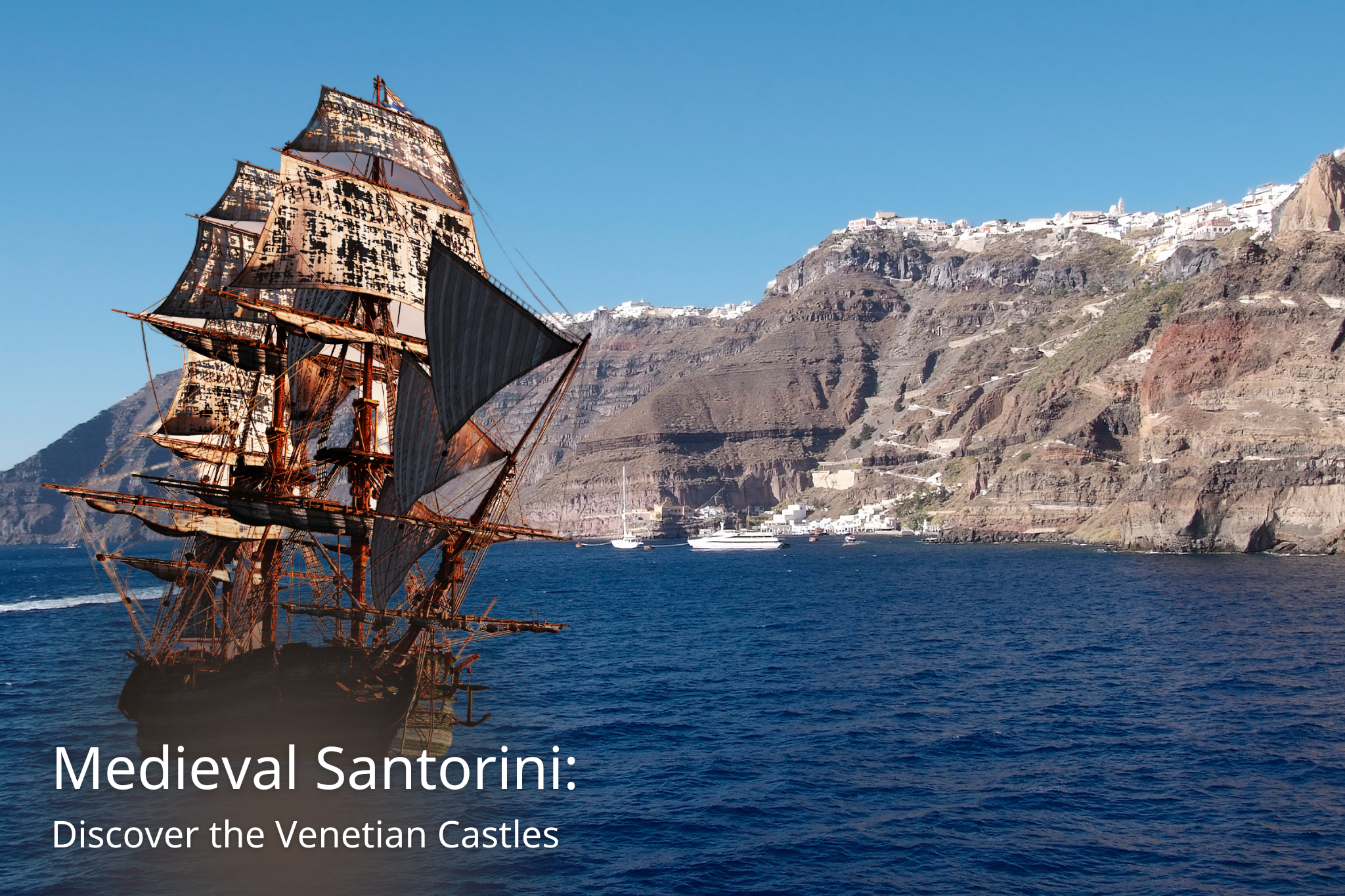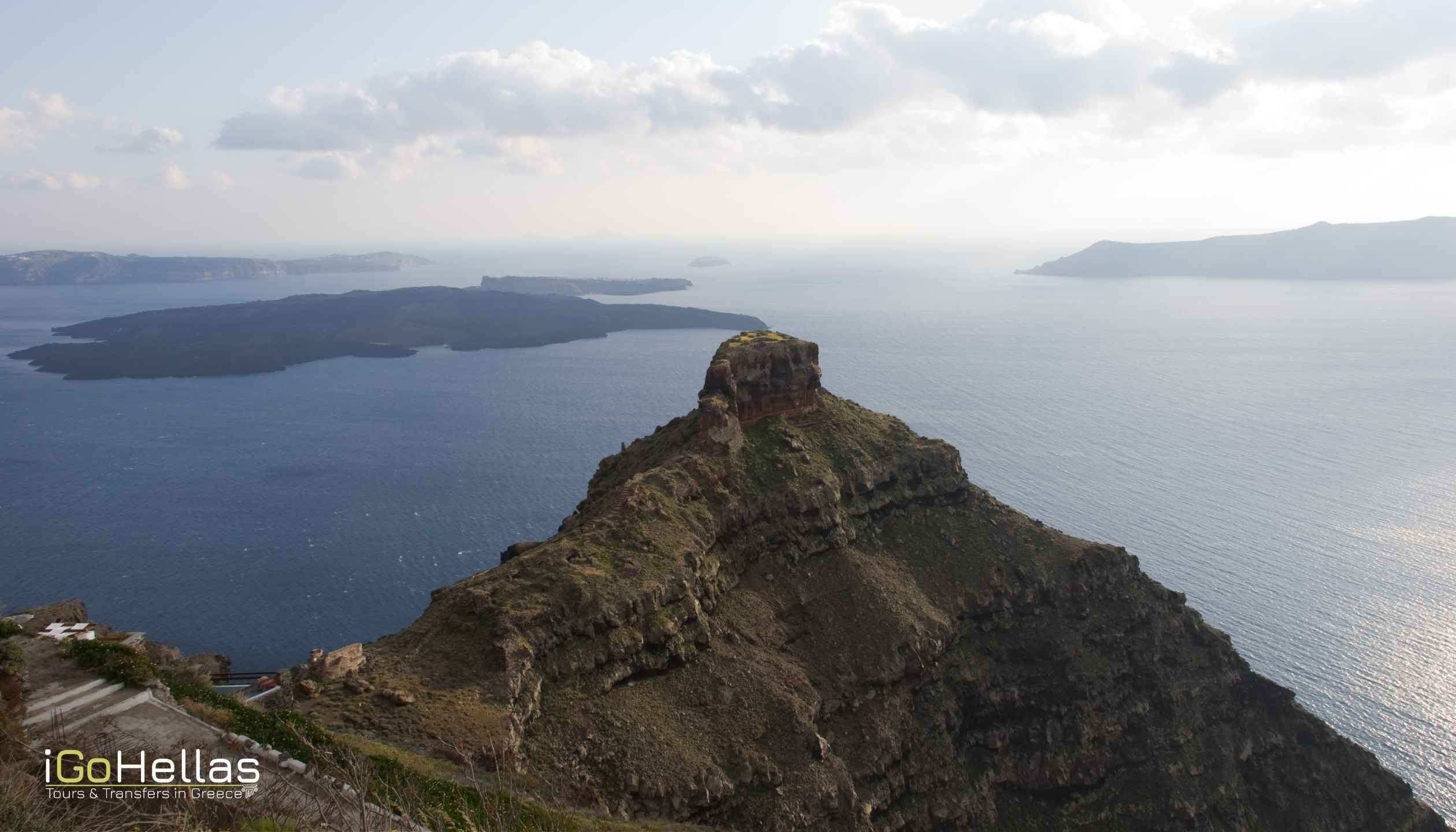
Medieval Santorini: Discover the Venetian Castles
The history of Santorini in the medieval and early modern periods is a microcosm of the Aegean islands’ more extensive histories at this time. Seaborne pirates and greedy foreign powers were a constant threat to Santorinians. For that reason, the Venetian masters of Santorini fortified the larger towns or prominent manors with thick, castle-like walls. These “kastelia,” equipped with gateways and “goulades” (watchtowers), existed at Skaros (or present-day Imerovigli), Oia (Castle of Aghios Nikolaos or Apanomerias), Pyrgos, Emporio and Akrotiri (Punta Castelli). Discover below the 5 fortresses that formerly defended the locals from invading armies and waves of marauding pirates.
The Castle of Agios Nikolaos in Oia
There is no need to introduce the well-known Oia Castle, commonly known as the Castle of Agios Nikolaos. Due to their expansive views of the volcanic caldera and the Aegean Sea, the castle remains from the 15th century are a favorite location for those who enjoy watching sunsets. The Venetian Dargent family constructed the castle, and it was under their control until Turkish forces took control of it in 1577. The terrible earthquake that struck the island in 1956 dealt the fortress another further blow. Despite all of this, the Castle of Agios Nikolas was able to maintain its timeless beauty, which continues to astonish visitors nowadays.
The Castle of Skaros in Imerovigli 
On the highest view point of the island are the ruins of Skaros, a medieval fortress town that functioned as Santorini’s capital until the 18th century. Giacomo Barozzi, a Venetian architect, created the castle in the 13th century. He was commissioned by the Byzantine Empire to build a fortification around the promontory. However, a portion of the town fell into the sea as a result of the volcanic explosion in 1650. The ruins that are still standing are a favorite spot for hikers and photographers.
The Castle of Pyrgos
In the wine-producing village of Pyrgos was constructed at the end of the 16th century the youngest fortress of the island and it is perched above the small. The Goulas, a watchtower that served as an important observation post, was located at the top of the stronghold. In the Middle Ages, piracy raids were a constant threat, thus most castles were constructed strategically to defend the locals from outside attackers. There was only one entrance to the castle, and people used a wooden structure above it to pour boiling oil on intruders from the outside.
The Castle of Emporio 
The Castle of Emporio, which was built in the middle of the 15th century and was once a significant Santorini commercial hub, is situated in the center of the village of Emporio. The walls of the stronghold are supposed to have been built by the same monks who built the Orthodox Monastery of St. John the Theologian, which is an interesting way that the tale of the castle is also tied to Patmos island. Due to their distinctive architectural styles, the castle and the nearby Nimborio Tower are must-see sights in Santorini.
The Castle of Akrotiri 
The Castle of Aktotiri was originally called “Punta Castelli” or “La Ponta,” which in medieval Italian means “the peak.” It was constructed in 1335 by Venetian emperors. The Venetians built a number of fortifications and watchtowers at strategic points throughout Santorini in an effort to defend the island. The Gozadini family originally owned the Akrotiri Castle after Nikolas Sanudos, the fifth Duke of Naxos, donated the area to them. Despite the fortress being tragically destroyed by the earthquake in 1956, it continues to draw hundreds of tourists because of its expansive vistas.
